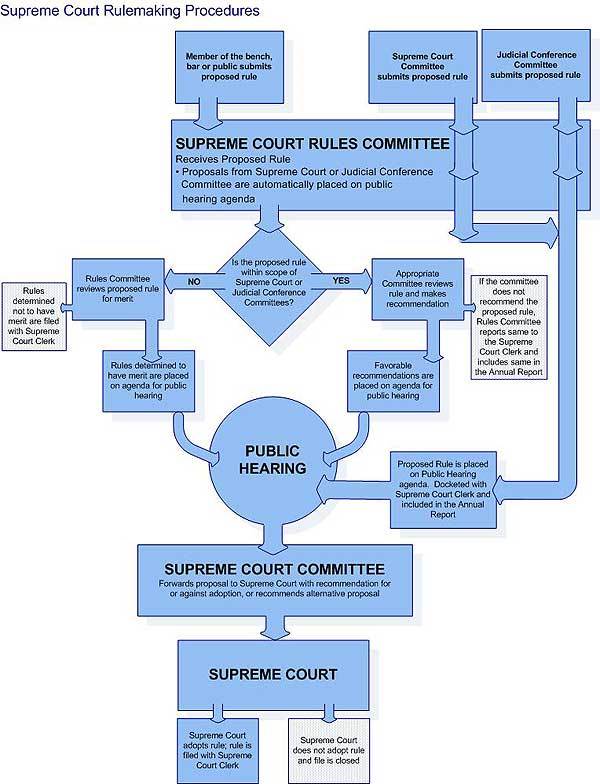How a Proposal Becomes a Supreme Court Rule | State of Illinois Office of the Illinois Courts
Supreme Court Rule 3, titled “Rulemaking Procedures,” explains the process for review of a proposed rule or a proposed amendment to an existing rule of the Supreme Court. While the Court may create or amend a Supreme Court Rule by its own action, many rule proposals advance through the process identified in Rule 3.
As explained in the text of Rule 3 and further illustrated by the chart below, the Supreme Court Rules Committee is responsible for receiving rule proposals from the Supreme Court, Supreme Court or Judicial Conference Committees, the bench, the bar or the public. Proposals offered by the bench, bar or public are reviewed by the Rules Committee and placed on the agenda for public hearing if the proposal is determined to have merit. If the substance of the proposal is within the scope of a Supreme Court or Judicial Conference committee, the Rules Committee first forwards the proposal on to that committee for its review and recommendation. If the proposal is returned to the Rules Committee with a favorable recommendation, it is then placed on the agenda for public hearing.
If the proposal comes to the Rules Committee from a Supreme Court or Judicial Conference committee, it is automatically placed on the agenda for public hearing. The Rules Committee’s public hearing is held on any date identified by the Rules Committee with 60 days’ notice to the bench, bar, and public. After the public hearing, the Rules Committee forwards the proposal to the Court with a recommendation to adopt or to not adopt. The Rules Committee may also recommend an alternative proposal. Proposals adopted by the Court are filed by the Supreme Court Clerk on the Miscellaneous Remedies docket.
Those interested in proposing a new rule or amendment to a current rule of the Supreme Court should forward a letter which includes specific language for the proposed new rule or rule amendment, as well as a concise explanation of the proposal, to the following address: Illinois Supreme Court Rules Committee, % Administrative Office of the Illinois Courts, 222 N. LaSalle Street, 13th Floor, Chicago, Illinois 60601.
